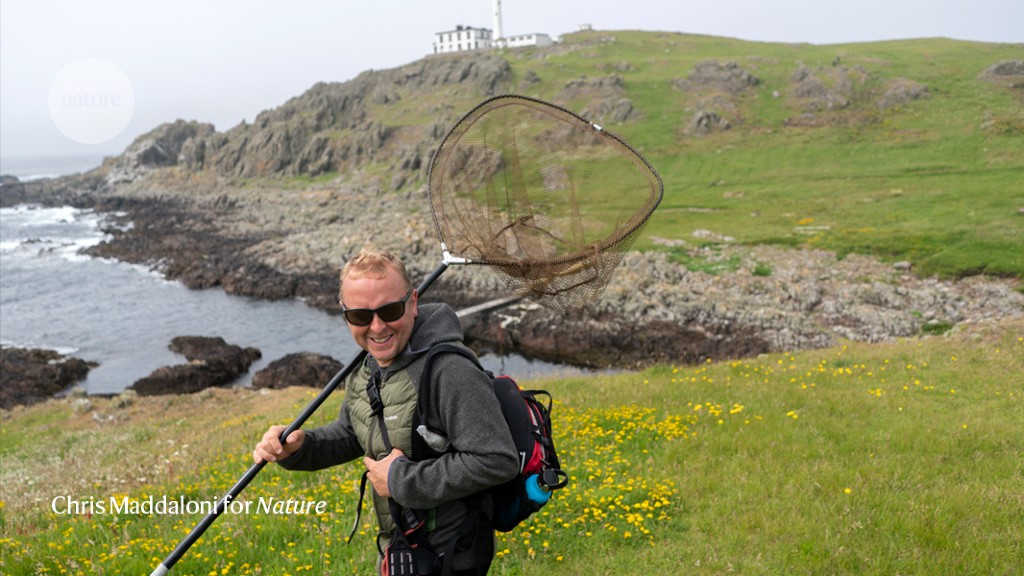Netting seabirds is great fun. And it’s crucial for science and conservation.
In this photo, taken in July, I’m heading out to capture birds on Inishtrahull, Ireland’s northernmost island. Lying about 10 kilometres northeast of the mainland, the island is home to thousands of seabirds during the summer nesting season, including storm petrels (Hydrobates pelagicus), Manx shearwaters (Puffinus puffinus) and fulmars (Fulmarus glacialis). The fulmars are experiencing a population crash, which I’m investigating.
Migratory birds are protected here, but we need to know where they go when they leave their nests. I attach an identification band and a light-level geolocator — a sensor that helps to estimate location from day length — to every bird I catch. A few birds get GPS monitors, but we dole those out carefully, because each costs about £1,000 (US$1,368).
The birds tend to nest on cliffs, and on a bad day I’ll catch just three. Some days I get as many as 12. Shearwaters are a challenge, because they nest only at night: I have to use a torch and watch my step.
The birds don’t enjoy getting caught, but the stress is only temporary. The data they provide help us to understand their migration patterns. Fulmars spend almost their entire lives at sea. I’m interested in finding out how often they share waters with long-line fishers, which would be a potentially fatal scenario for the birds. That’s not the only threat: a study has found that more than half of beached North Sea fulmars have large amounts of plastic in their stomachs (see go.nature.com/3cosy8j).
The lighthouse behind me is now home to the Inishtrahull Bird Observatory, a base for birdwatchers. I’m the founding chairman, but the observatory, part of a network of monitoring spots stretching 1,200 kilometres from Scotland to southern Ireland, will outlive me. It will be a centre for science and education for years to come.





More News
Chance of heatwaves in India rising with climate change
A site-resolved two-dimensional quantum simulator with hundreds of trapped ions – Nature
How AI could improve robotics, the cockroach’s origins, and promethium spills its secrets